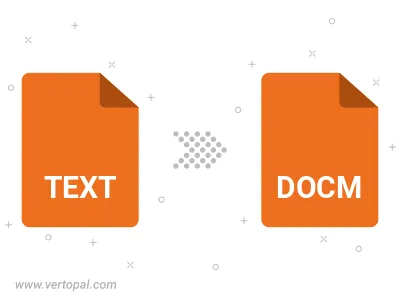Convert TEXT HADDOCK to DOCM
Convert TEXT HADDOCK markup documents to DOCM format, edit and optimize documents online and free.

The TEXT file extension, associated with Haddock Markup Language, is used for documentation in Haskell programming. Haddock is a tool for generating documentation from annotated Haskell source code. It uses a lightweight markup language, similar to LaTeX, to format the documentation. The history of Haddock dates back to its creation by Simon Marlow and others as part of the GHC (Glasgow Haskell Compiler) project. It has since become a standard tool in the Haskell community for creating comprehensive and readable documentation.
The DOCM file extension represents a Microsoft Word Macro-Enabled Document. This format allows users to embed macros, which are automated scripts that enhance productivity by automating repetitive tasks. Introduced with Microsoft Office 2007, DOCM files provide advanced functionality over the standard DOCX format by supporting macro operations. They are widely used in various professional environments to streamline complex document processes efficiently.
Drag & drop or browse your device to select and upload your TEXT HADDOCK file.
Use the tools available for converting TEXT HADDOCK to DOCM and click the Convert button.
Let the conversion process finish, then download your DOCM document.

To change TEXT HADDOCK format to DOCM, upload your TEXT HADDOCK file to proceed to the preview page. Use any available tools if you want to edit and manipulate your TEXT HADDOCK file. Click on the convert button and wait for the convert to complete. Download the converted DOCM file afterward.
Follow steps below if you have installed Vertopal CLI on your macOS system.
cd to TEXT HADDOCK file location or include path to your input file.Follow steps below if you have installed Vertopal CLI on your Windows system.
cd to TEXT HADDOCK file location or include path to your input file.Follow steps below if you have installed Vertopal CLI on your Linux system.
cd to TEXT HADDOCK file location or include path to your input file.